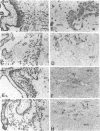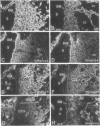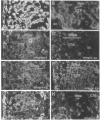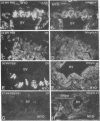Abstract
In normal human pregnancy, invasion of the uterus and its arterial system by cytotrophoblasts extends through the entire decidua and the adjacent third of the myometrium. Our previous work showed that during the first trimester of pregnancy, invasion is accompanied by a marked change in the expression of cell adhesion molecules by invasive cytotrophoblasts. In the pregnancy disorder preeclampsia, cytotrophoblast invasion is limited to the superficial decidua, and few arterioles are breached. The purpose of this study was to determine whether cytotrophoblast expression of adhesion molecules in this disorder is also abnormal. Placental bed biopsy specimens from normal pregnancies and those complicated by preeclampsia were stained with anti-integrin antibodies. The results showed that adhesion molecule switching by invasive cytotrophoblasts is abnormal in preeclampsia, which suggests that this subpopulation of trophoblast cells fails to differentiate properly. A likely result is that the delicate balance of adhesive interactions that normally permit cytotrophoblast invasion is tipped in favor of those which restrain this process, with the net effect of shallow uterine invasion.
Full text
PDF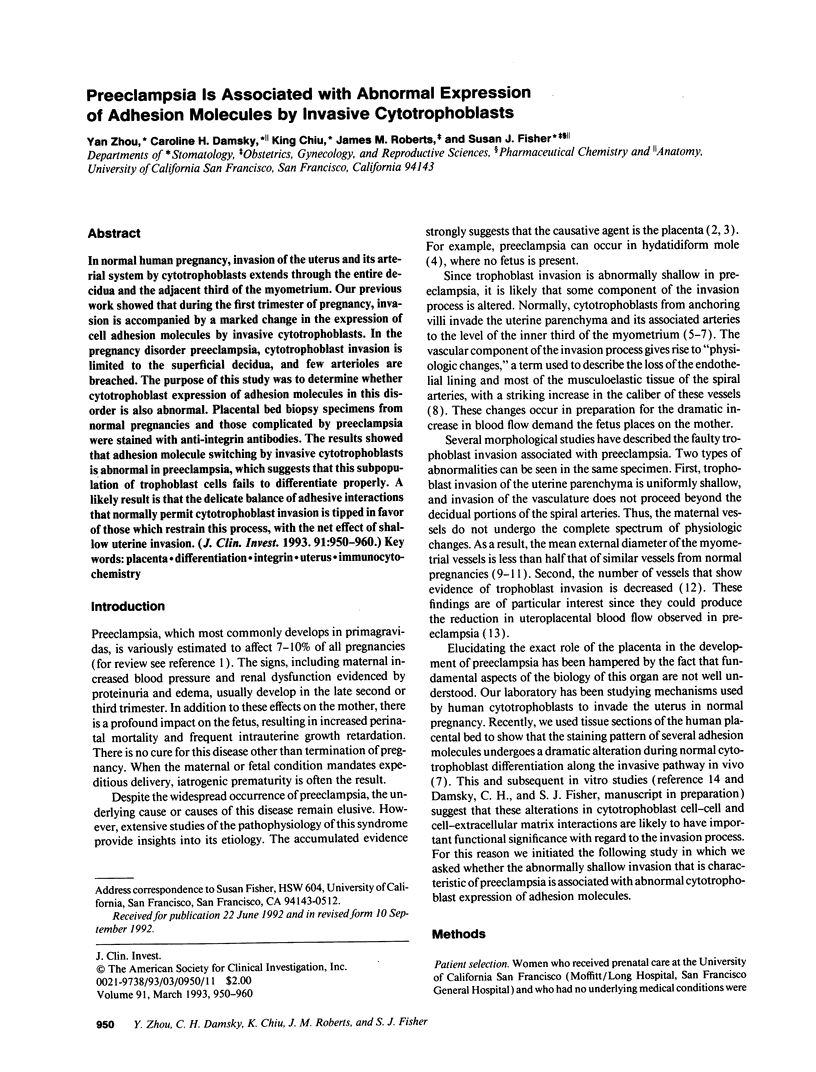
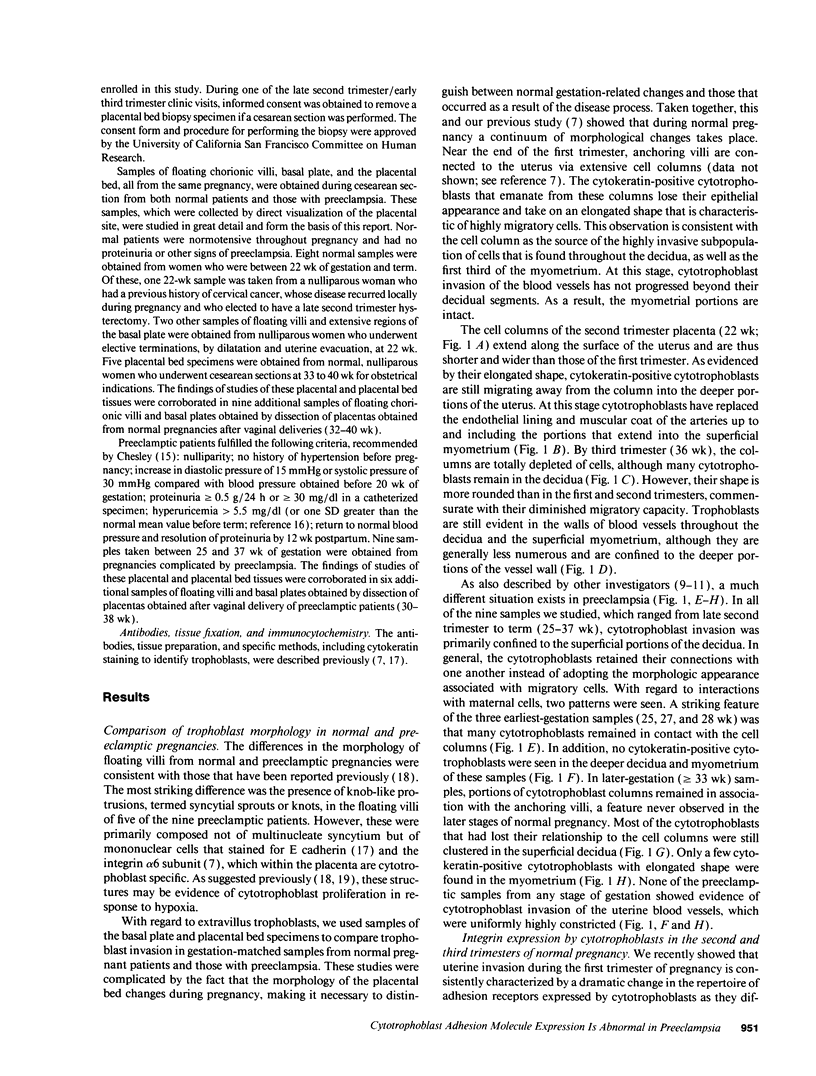
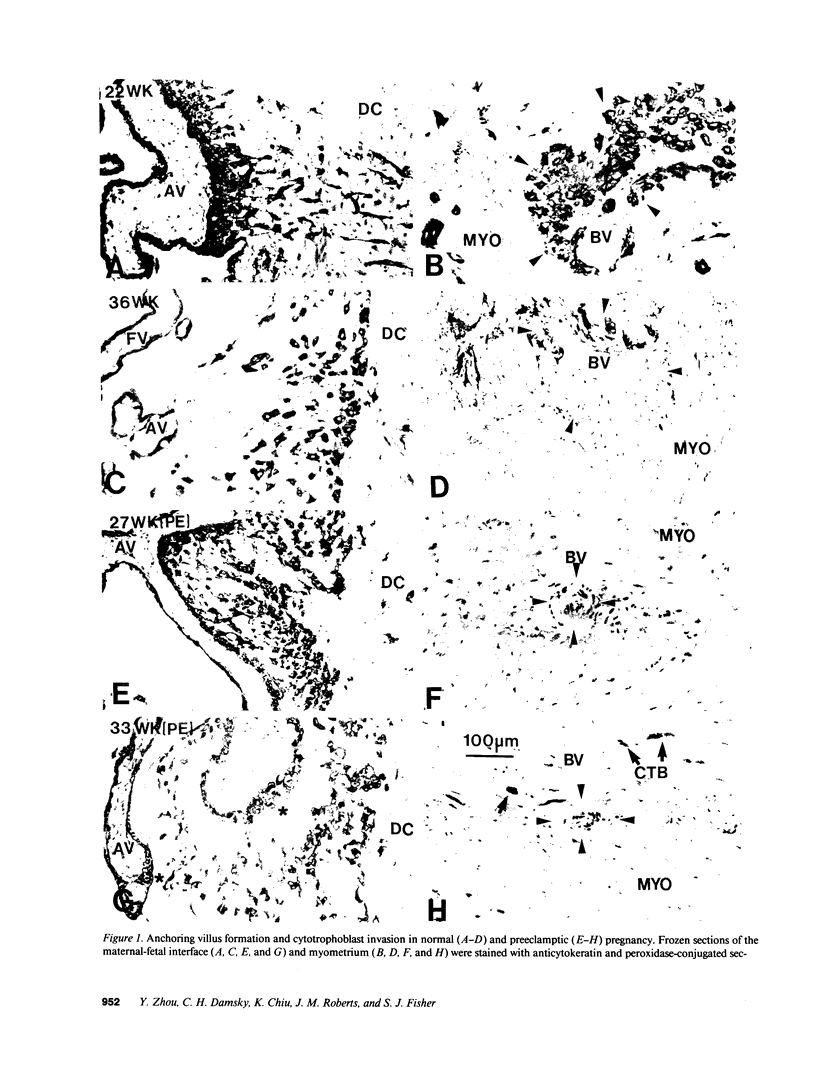
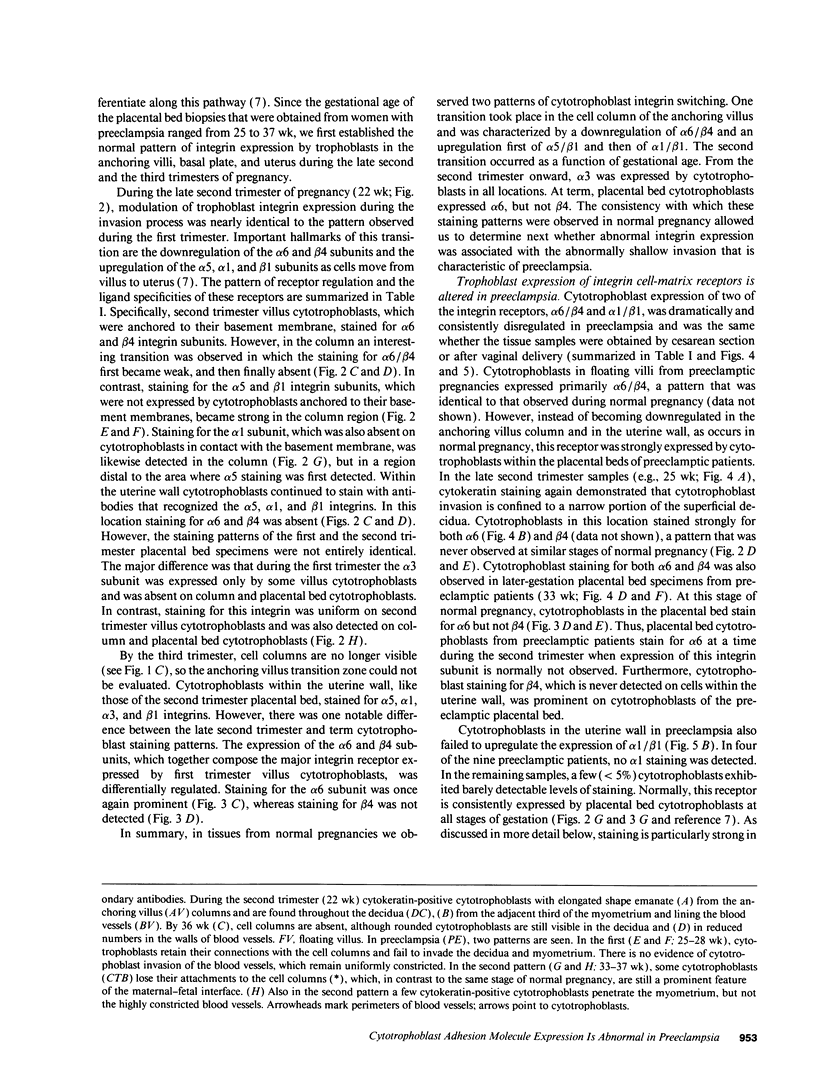
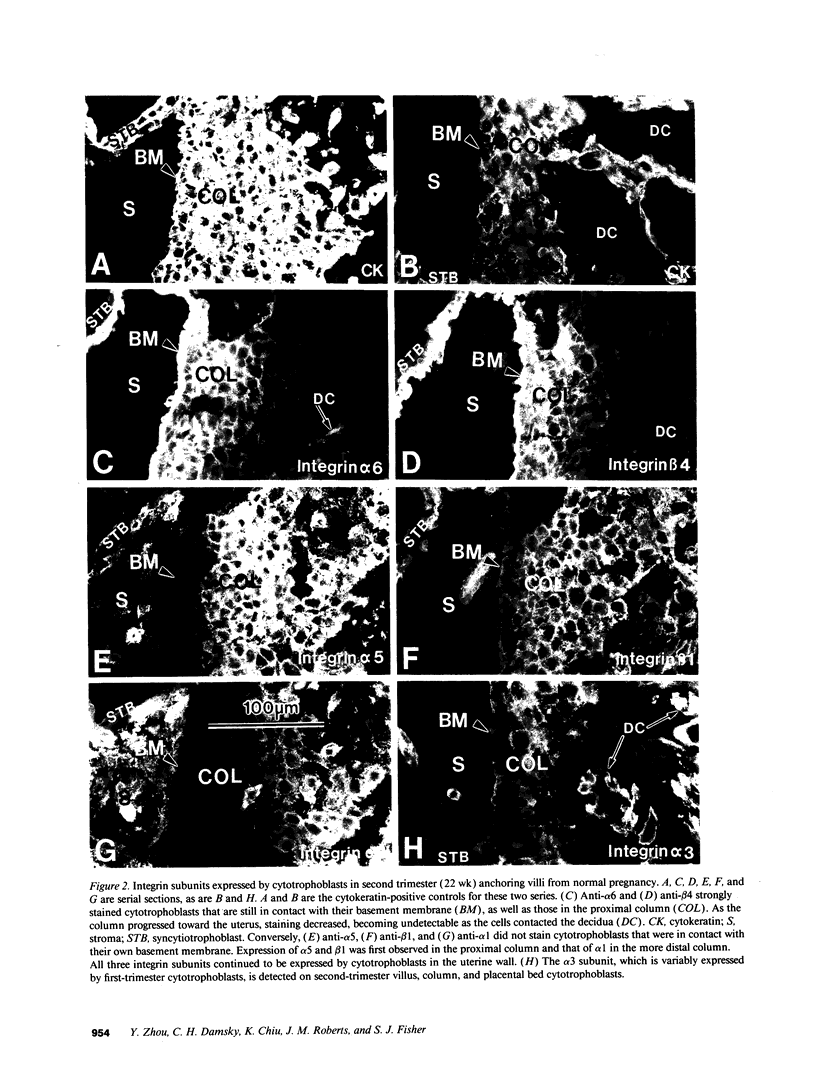
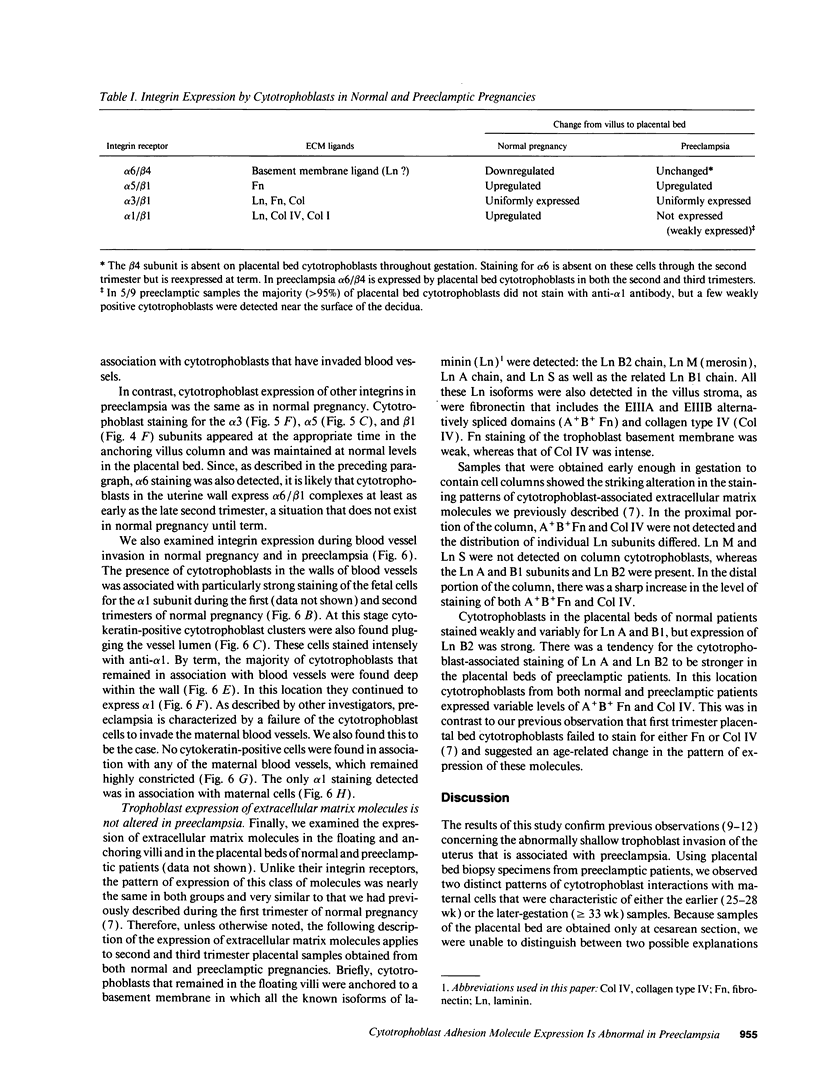
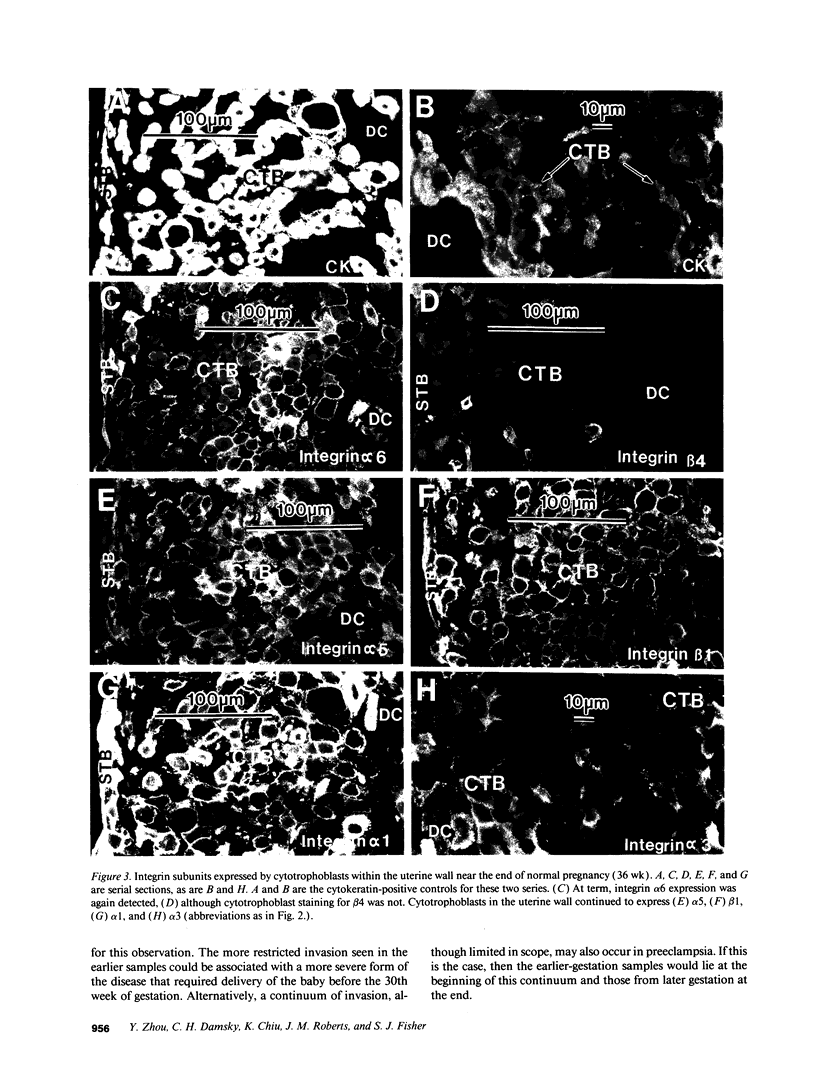
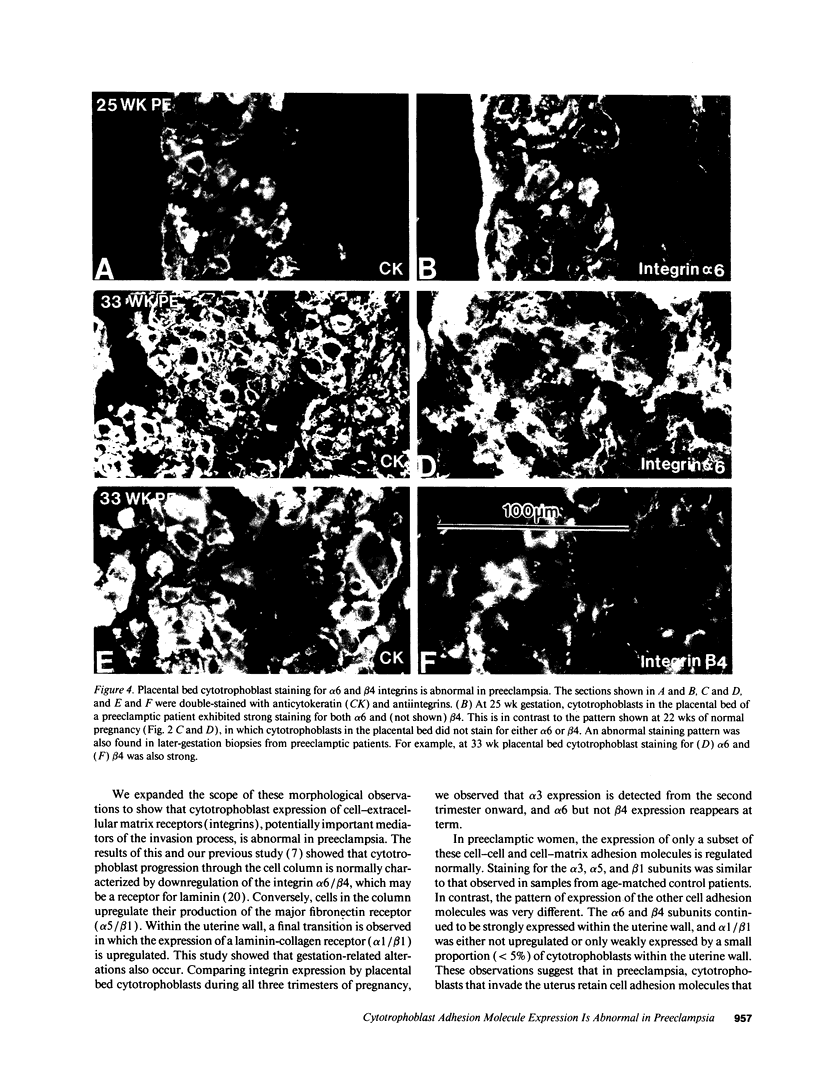
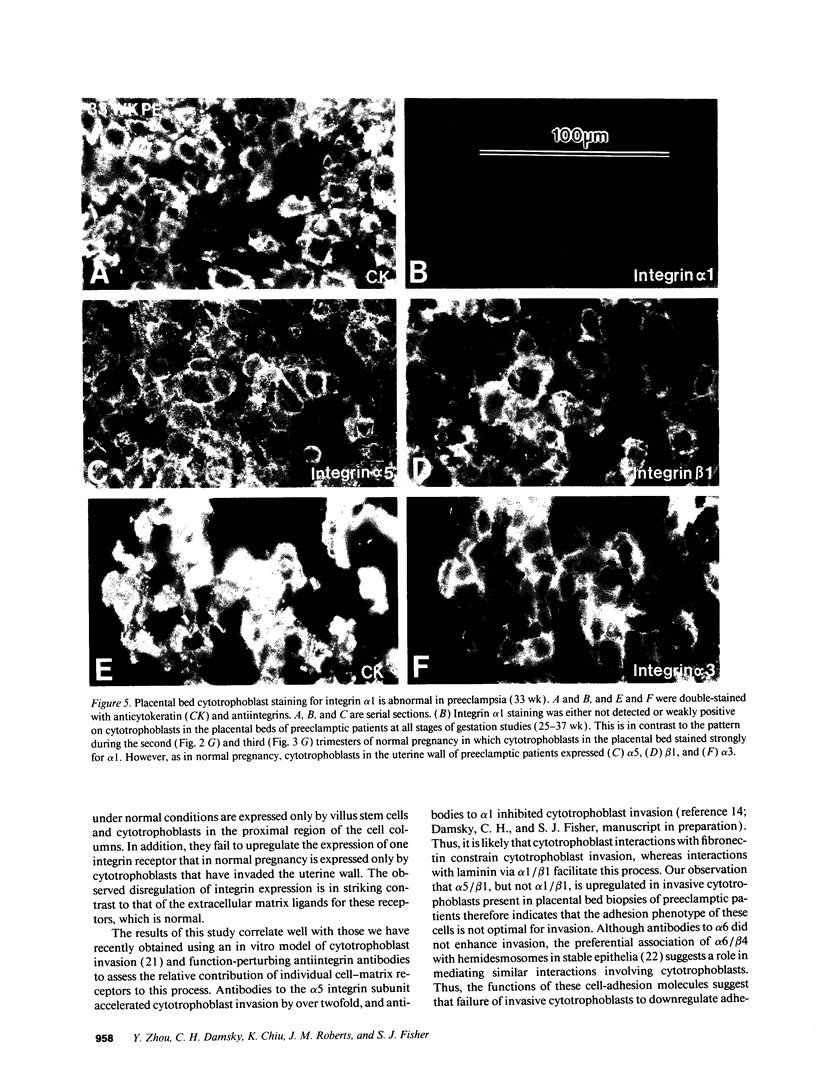
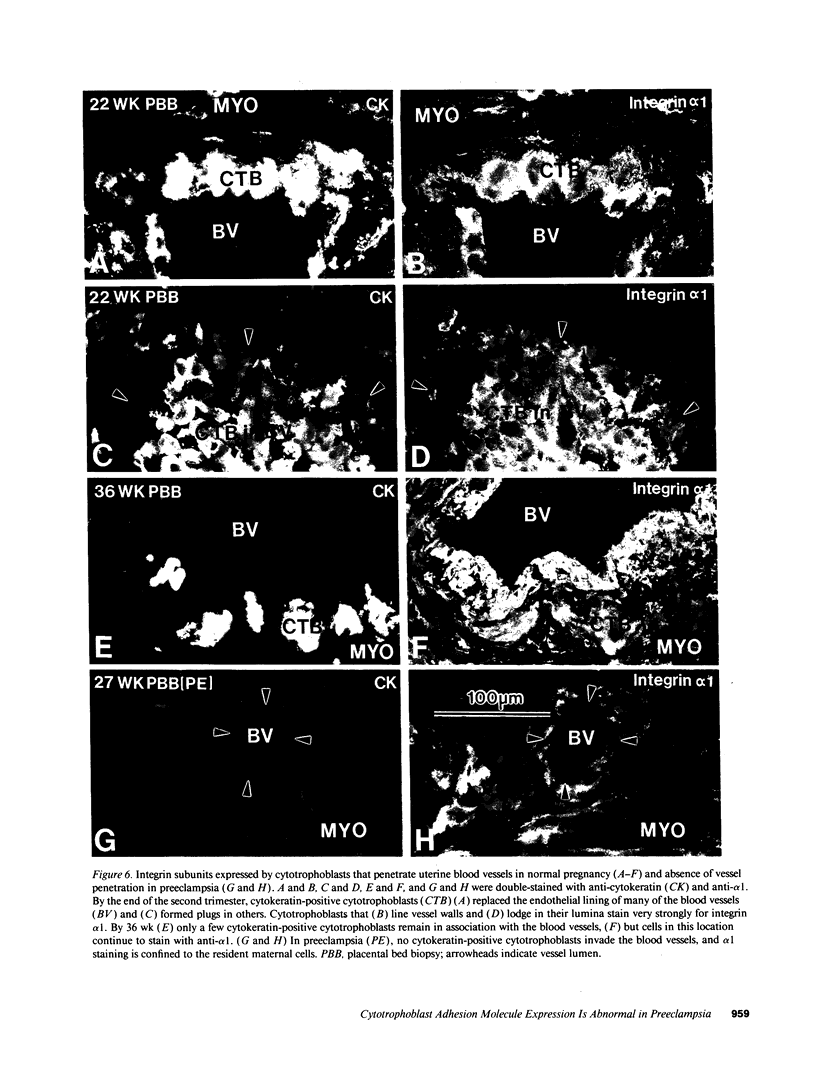
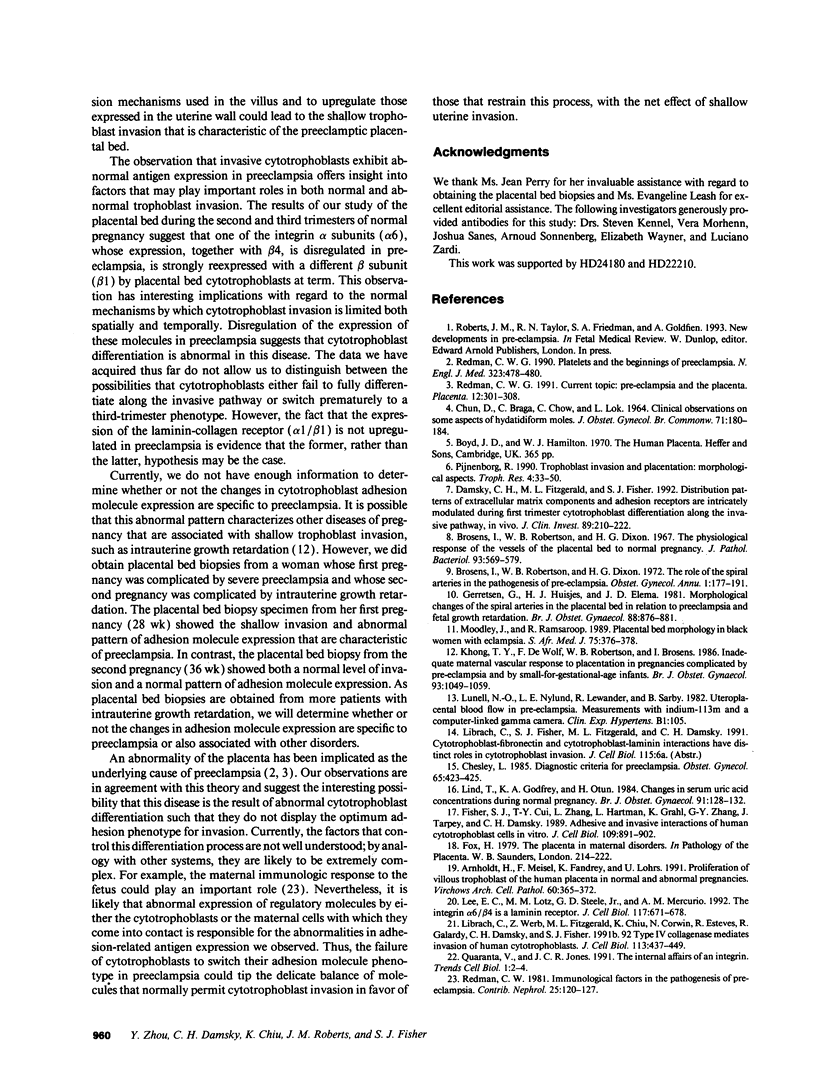
Images in this article
Selected References
These references are in PubMed. This may not be the complete list of references from this article.
- Arnholdt H., Meisel F., Fandrey K., Löhrs U. Proliferation of villous trophoblast of the human placenta in normal and abnormal pregnancies. Virchows Arch B Cell Pathol Incl Mol Pathol. 1991;60(6):365–372. doi: 10.1007/BF02899568. [DOI] [PubMed] [Google Scholar]
- Brosens I. A., Robertson W. B., Dixon H. G. The role of the spiral arteries in the pathogenesis of preeclampsia. Obstet Gynecol Annu. 1972;1:177–191. [PubMed] [Google Scholar]
- Brosens I., Robertson W. B., Dixon H. G. The physiological response of the vessels of the placental bed to normal pregnancy. J Pathol Bacteriol. 1967 Apr;93(2):569–579. doi: 10.1002/path.1700930218. [DOI] [PubMed] [Google Scholar]
- CHUN D., BRAGA C., CHOW C., LOK L. CLINICAL OBSERVATIONS ON SOME ASPECTS OF HYDATIDIFORM MOLES. J Obstet Gynaecol Br Commonw. 1964 Apr;71:180–184. doi: 10.1111/j.1471-0528.1964.tb04263.x. [DOI] [PubMed] [Google Scholar]
- Chesley L. C. Diagnosis of preeclampsia. Obstet Gynecol. 1985 Mar;65(3):423–425. [PubMed] [Google Scholar]
- Damsky C. H., Fitzgerald M. L., Fisher S. J. Distribution patterns of extracellular matrix components and adhesion receptors are intricately modulated during first trimester cytotrophoblast differentiation along the invasive pathway, in vivo. J Clin Invest. 1992 Jan;89(1):210–222. doi: 10.1172/JCI115565. [DOI] [PMC free article] [PubMed] [Google Scholar]
- Fisher S. J., Cui T. Y., Zhang L., Hartman L., Grahl K., Zhang G. Y., Tarpey J., Damsky C. H. Adhesive and degradative properties of human placental cytotrophoblast cells in vitro. J Cell Biol. 1989 Aug;109(2):891–902. doi: 10.1083/jcb.109.2.891. [DOI] [PMC free article] [PubMed] [Google Scholar]
- Gerretsen G., Huisjes H. J., Elema J. D. Morphological changes of the spiral arteries in the placental bed in relation to pre-eclampsia and fetal growth retardation. Br J Obstet Gynaecol. 1981 Sep;88(9):876–881. doi: 10.1111/j.1471-0528.1981.tb02222.x. [DOI] [PubMed] [Google Scholar]
- Khong T. Y., De Wolf F., Robertson W. B., Brosens I. Inadequate maternal vascular response to placentation in pregnancies complicated by pre-eclampsia and by small-for-gestational age infants. Br J Obstet Gynaecol. 1986 Oct;93(10):1049–1059. doi: 10.1111/j.1471-0528.1986.tb07830.x. [DOI] [PubMed] [Google Scholar]
- Lee E. C., Lotz M. M., Steele G. D., Jr, Mercurio A. M. The integrin alpha 6 beta 4 is a laminin receptor. J Cell Biol. 1992 May;117(3):671–678. doi: 10.1083/jcb.117.3.671. [DOI] [PMC free article] [PubMed] [Google Scholar]
- Lind T., Godfrey K. A., Otun H., Philips P. R. Changes in serum uric acid concentrations during normal pregnancy. Br J Obstet Gynaecol. 1984 Feb;91(2):128–132. doi: 10.1111/j.1471-0528.1984.tb05895.x. [DOI] [PubMed] [Google Scholar]
- Lunell N. O., Nylund L. E., Lewander R., Sarby B. Uteroplacental blood flow in pre-eclampsia measurements with indium-113m and a computer-linked gamma camera. Clin Exp Hypertens B. 1982;1(1):105–117. doi: 10.3109/10641958209037184. [DOI] [PubMed] [Google Scholar]
- Moodley J., Ramsaroop R. Placental bed morphology in black women with eclampsia. S Afr Med J. 1989 Apr 15;75(8):376–378. [PubMed] [Google Scholar]
- Quaranta V., Jones J. C. The internal affairs of an integrin. Trends Cell Biol. 1991 Jul;1(1):2–4. doi: 10.1016/0962-8924(91)90046-c. [DOI] [PubMed] [Google Scholar]
- Redman C. W. Current topic: pre-eclampsia and the placenta. Placenta. 1991 Jul-Aug;12(4):301–308. doi: 10.1016/0143-4004(91)90339-h. [DOI] [PubMed] [Google Scholar]
- Redman C. W. Immunological factors in the pathogenesis of preeclampsia. Contrib Nephrol. 1981;25:120–127. doi: 10.1159/000396021. [DOI] [PubMed] [Google Scholar]
- Redman C. W. Platelets and the beginnings of preeclampsia. N Engl J Med. 1990 Aug 16;323(7):478–480. doi: 10.1056/NEJM199008163230710. [DOI] [PubMed] [Google Scholar]



